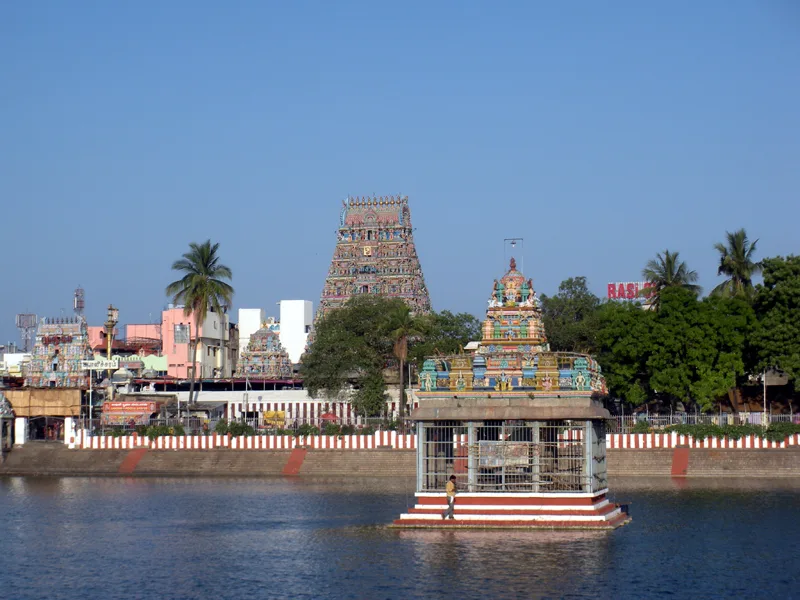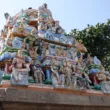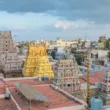Welcome to the majestic realm of spirituality and architectural brilliance – the Kapaleeshwarar Temple. In this article, we invite you to delve into the rich history, cultural significance, and awe-inspiring details that make this temple a true masterpiece. Our exploration goes beyond the surface, offering you an in-depth understanding of why Kapaleeshwarar Temple stands as a beacon of devotion and architectural splendor.
History and Origins
The Ancient Roots
Kapaleeshwarar Temple, situated in Mylapore, Chennai, boasts a history that dates back to the 7th century. Its construction is attributed to the Pallava dynasty, showcasing their prowess in blending religious sanctity with artistic grandeur. The temple is dedicated to Lord Shiva, specifically in his form as Kapaleeshwarar, signifying the Destroyer of Evil.
Architectural Marvels
The temple’s architecture is a testament to the Dravidian style, characterized by intricate carvings, towering gopurams, and vibrant sculptures. The main sanctum, adorned with detailed sculptures and inscriptions, exudes a divine aura. Each stone seems to whisper tales of a bygone era, inviting worshippers and admirers alike to witness its timeless beauty.
Spiritual Significance
The Divine Presence
Stepping into the premises of Kapaleeshwarar Temple is more than a physical journey; it’s a spiritual odyssey. The sanctum sanctorum houses the revered deity, Lord Kapaleeshwarar, and his consort, Goddess Karpagambal. Devotees believe that seeking the blessings here brings prosperity, harmony, and spiritual fulfillment.
Unique Rituals and Festivals
The temple comes alive during festivals, with elaborate ceremonies and processions that captivate the senses. The Arubathimoovar festival, celebrating the sixty-three Nayanars, and the Brahmotsavam are just a glimpse into the vibrant tapestry of rituals that weave the spiritual fabric of Kapaleeshwarar Temple.
Architectural Splendors
Gopurams: Gateway to the Divine
The towering gopurams, adorned with intricate sculptures, serve as the gateway to spiritual realms. The East Gopuram, standing tall with its vibrant colors and detailed carvings, is a visual feast. It not only welcomes devotees but also narrates stories of mythology through its meticulously crafted artwork.
Thousand Pillar Hall: An Artistic Marvel
The Thousand Pillar Hall, an architectural marvel within the temple complex, showcases the zenith of craftsmanship. Each pillar tells a story, depicting mythological scenes, celestial beings, and divine motifs. Exploring this hall is akin to traversing through a time portal, witnessing the glory of an era long gone.
Visitor Experience
Pilgrimage and Beyond
Visiting Kapaleeshwarar Temple is not merely a pilgrimage; it’s an encounter with history, spirituality, and artistic brilliance. The ambiance of devotion, the aroma of incense, and the resonating chants create an immersive experience, leaving an indelible mark on every visitor.
Local Surroundings and Culture
Immersing yourself in the temple’s surroundings unveils the vibrant culture of Mylapore. The bustling markets, traditional eateries, and the overall warmth of the locals add layers to your journey, making it a holistic experience that goes beyond the temple walls.
Conclusion
In conclusion, Kapaleeshwarar Temple stands as a living testament to the confluence of spirituality and architecture. Its historical roots, spiritual significance, and architectural marvels converge to create an experience that transcends time. Whether you seek divine blessings or architectural inspiration, this temple beckons, promising a journey that resonates with the soul.
Similar Articles
Frequently Asked Questions (FAQs) – Kapaleeshwarar Temple
Q1: What is the historical significance of Kapaleeshwarar Temple?
A1: Kapaleeshwarar Temple, with roots tracing back to the 7th century, holds immense historical significance. Constructed by the Pallava dynasty, it stands as a testament to the rich cultural heritage of Chennai, showcasing the amalgamation of art, history, and spirituality.
Q2: Who is the presiding deity of Kapaleeshwarar Temple?
A2: The presiding deity of Kapaleeshwarar Temple is Lord Kapaleeshwarar, an incarnation of Lord Shiva. The temple also reveres Goddess Karpagambal as the divine consort of Lord Kapaleeshwarar.
Q3: What architectural styles are predominant in Kapaleeshwarar Temple?
A3: Kapaleeshwarar Temple is a prime example of Dravidian architecture. The intricate carvings, towering gopurams, and vibrant sculptures are characteristic of this style, creating a visually stunning and spiritually enriching environment.
Q4: Can visitors witness any special rituals or festivals at Kapaleeshwarar Temple?
A4: Yes, Kapaleeshwarar Temple hosts various rituals and festivals that offer a unique experience to visitors. The Arubathimoovar festival, celebrating the sixty-three Nayanars, and the grand Brahmotsavam are among the vibrant events that attract devotees from far and wide.
Q5: What is the significance of the Thousand Pillar Hall?
A5: The Thousand Pillar Hall within Kapaleeshwarar Temple is a marvel of craftsmanship. Adorned with intricately carved pillars depicting mythological scenes, this hall serves as both an artistic treasure and a space for devotees to immerse themselves in the divine atmosphere.
Q6: Is Kapaleeshwarar Temple only a place of worship, or does it offer a broader cultural experience?
A6: Kapaleeshwarar Temple offers a comprehensive cultural experience beyond being a place of worship. Surrounding markets, traditional eateries, and the local ambiance in Mylapore contribute to a holistic visit, allowing visitors to engage with the vibrant culture of the region.
Q7: Are there any specific customs or guidelines for visitors to follow?
A7: While visiting Kapaleeshwarar Temple, visitors should adhere to customary practices such as removing footwear before entering the main sanctum, maintaining decorum during rituals, and respecting the sacredness of the premises. Photography rules may vary, so it’s essential to check for any restrictions.
Q8: How can one reach Kapaleeshwarar Temple, and is there parking available?
A8: Kapaleeshwarar Temple is conveniently located in Mylapore, Chennai. Visitors can access it by various modes of transportation, including buses and taxis. Limited parking facilities are available in the vicinity, and it’s advisable to plan accordingly, especially during peak times.
Q9: Can non-Hindus visit Kapaleeshwarar Temple?
A9: Yes, Kapaleeshwarar Temple is open to people of all faiths and welcomes visitors irrespective of their religious beliefs. It is a place where individuals can appreciate the cultural and spiritual heritage of the region.
Q10: Are there guided tours available for a more in-depth understanding of the temple?
A10: While the temple may not offer official guided tours, visitors can engage with local guides or avail themselves of informational resources provided by the temple authorities to enhance their understanding of the historical, architectural, and spiritual aspects of Kapaleeshwarar Temple.









